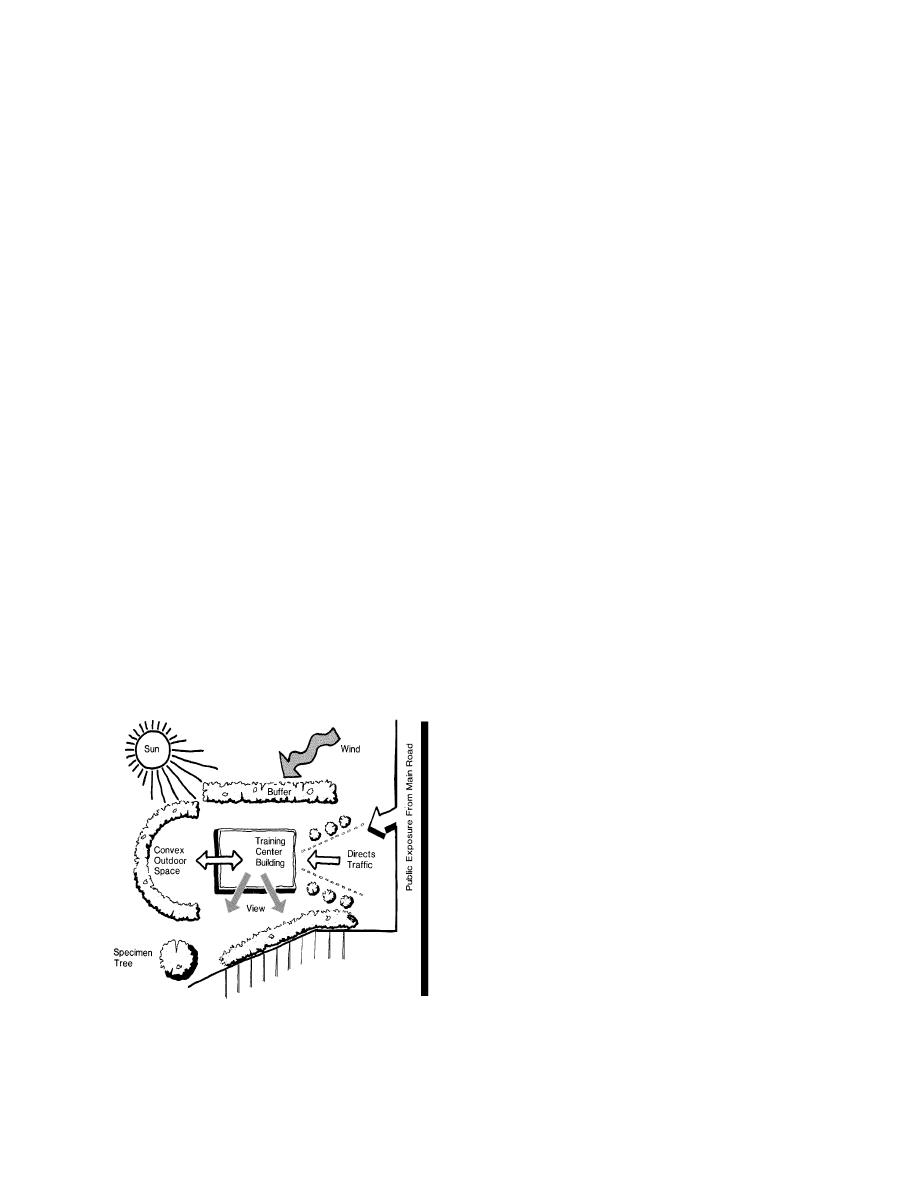
UFC 4-171-05
1 January 2005
with change 25 October 2006
2-5.3.1 The AT/FP site criteria require, at a minimum, provision of standoff zones to
separate buildings from parking, roadways, and other buildings. The standoff zones
increase the minimum amount of land required to provide a compliant and functional
site layout, and should be considered during site selection. For elevated threat levels,
vehicle barriers might be required.
2-5.3.2 Several building design/construction measures address structural design and
the threat of progressive collapse in the event of a bomb blast. These measures
discourage building designs of more than two stories due to the associated costs.
2-5.3.3 Other measures address locations of certain spaces, exterior glazing, utility
locations/routing, locations of HVAC air intakes, landscaping, etc.
2-5.4
||content||
\ Mass Notification Systems in Military Construction Projects. To reduce the
risk of mass casualties, there must be a timely means to notify building occupants of
threats and what should be done in response to those threats. Mass notification is
defined as the capability to provide real-time information to all building occupants, or
personnel in the immediate vicinity of a building, during emergency situations.
UFC 4-021-01 provides additional guidance on mass notification systems./1/
2-6
LAnDsCAPe
2-6.1
Landscaping must be an integral part of the facilities design process. Good
landscape planning affords many valuable benefits. Planting design reflects an
understanding of facilities goals and objectives, an appreciation for existing site
conditions and an ability to enhance the outdoor environment through the integration of
natural and cultural conditions in a sensitive and pragmatic manner.
Figure 2-7
Landscape Planting
2-6.2
Architectural character and sense
of place is supported by proper landscape
design, which introduces aspects of scale,
color, texture, form, etc., to the living
environment.
2-6.3
Traffic direction influenced by
design of planted areas and strategic
location of plant materials can support
aspects of wayfinding and reduce the need
for supplemental site graphics. Good design
encourages safety and assists in the
resolution of conflicts between the
automobile and the pedestrian.
2-6.4
Appropriate selection and location of plants reduces water erosion,
emphasizes ecological control, lessens proximate environmental impact and promotes
clean water through the introduction of natural filtration methods.
21


 Previous Page
Previous Page
